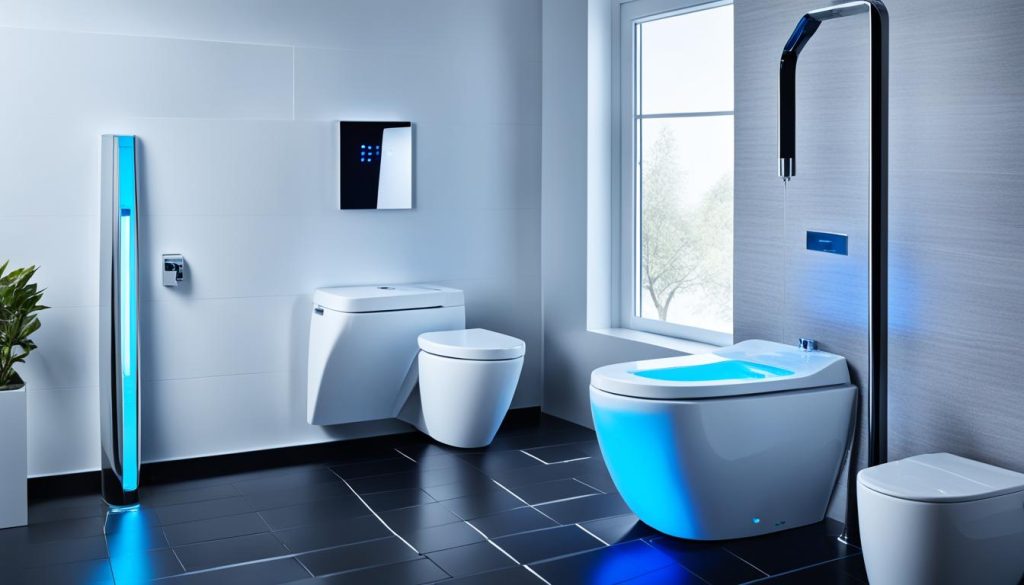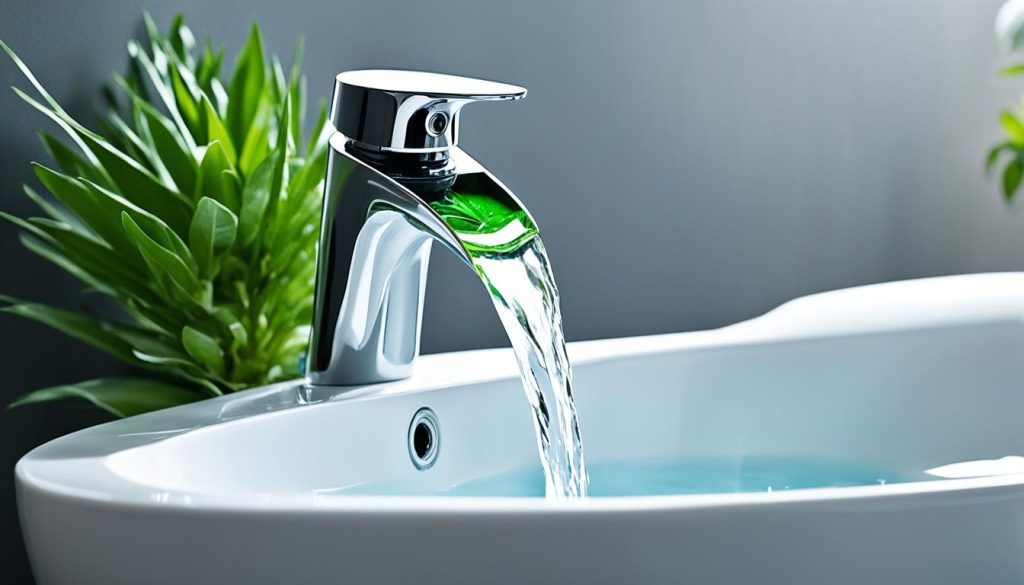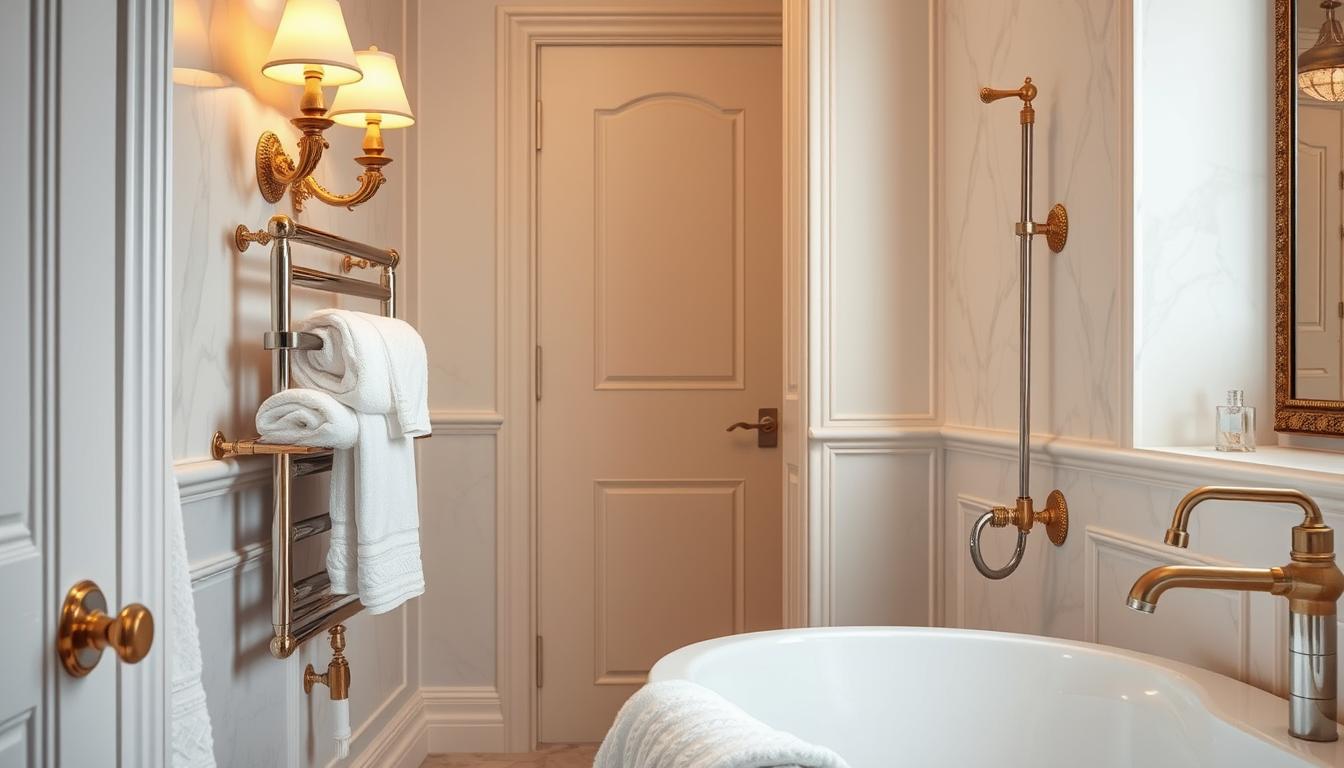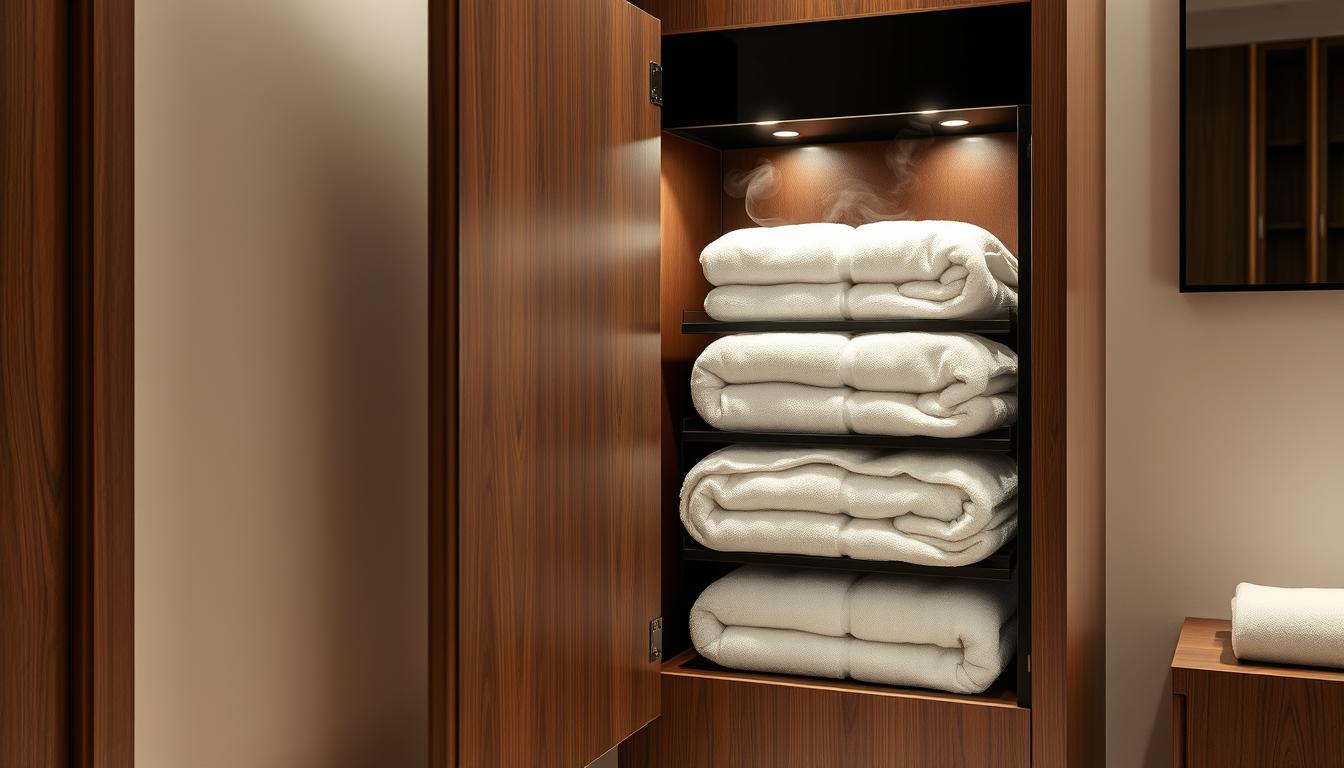Are you curious about bidets and how they work? One common misconception is that bidets use toilet water for cleaning. However, the truth is quite different.
Bidets have their own water supply, separate from the toilet. So, you can rest assured that the water used in bidets is clean and fresh. Depending on your preference and the bidet model, you can choose between warm or cold water for a comfortable experience.
Now that we’ve cleared that up, let’s explore the hygiene benefits of using bidets and why they have gained popularity around the world.
Key Takeaways:
- Bidets have their own water supply and do not use toilet water.
- Using bidets provides a more thorough and hygienic cleaning experience.
- They are popular in various countries, including Europe and South America.
- Bidets offer environmental benefits by reducing toilet paper usage.
- Practicing proper toilet hygiene, including handwashing, is essential for overall well-being.
The Hygiene Benefits of Using Bidets
Using bidets offers several hygiene benefits compared to using toilet paper. A study comparing microbial contamination between toilet paper and bidet users showed that bidet users had significantly fewer microbes. Bidets provide a more thorough cleaning and can be especially beneficial for individuals with conditions like loose stools, irritable bowel syndrome, hemorrhoids, anal fissures, or those recovering postpartum. Additionally, bidets can help reduce skin irritation caused by constant wiping, promoting better overall hygiene.
With bidets, you can enjoy these amazing benefits:
- Thorough cleaning: Bidets use water to cleanse, ensuring a more effective and gentle cleaning experience.
- Reduces microbial contamination: Studies have shown that bidet users have significantly fewer microbes compared to toilet paper users.
- Benefits individuals with specific conditions: Bidets can provide relief and better hygiene for individuals with loose stools, irritable bowel syndrome, hemorrhoids, anal fissures, or those in the postpartum phase.
- Reduces skin irritation: Bidets minimize the need for constant wiping, helping to reduce skin irritation and promote better overall hygiene.
“Bidets provide a more thorough cleaning and can be especially beneficial for individuals with conditions like loose stools, irritable bowel syndrome, hemorrhoids, anal fissures, or those recovering postpartum.”
Bidet hygiene is a critical aspect of maintaining cleanliness and preventing infections. By incorporating bidets into your bathroom routine, you can enhance your overall hygiene and cleanliness.
Check out the image below to learn more about bidet features:
The Global Popularity of Bidets
From their origins in 18th-century France where bidets were exclusive to the elite, bidets have now gained widespread popularity worldwide. European countries like Italy have embraced bidets, with some even passing laws mandating bidet installation in homes.
In South America, bidets are also highly popular, particularly in countries such as Argentina, Uruguay, and Venezuela. Bidets come in various forms to cater to different preferences and needs. These options include standalone bidets, bidet toilet combinations, and bidet attachments that can be easily added to existing toilets.
Bidet toilet combinations offer the convenience of having a bidet and toilet combined, saving space in smaller bathrooms. They are designed to provide a seamless and integrated experience, combining the functionality of a bidet with the familiarity of a traditional toilet.
On the other hand, bidet attachments are an affordable and practical option for those who already have standard toilets. These attachments can be easily installed and connected to the existing toilet, adding bidet functionalities without the need for extensive plumbing modifications.
The global popularity of bidets showcases the increasing recognition of their hygienic and comfortable benefits. Whether it’s a standalone bidet, bidet toilet combination, or bidet attachment, there are options available to suit every preference and bathroom layout.
Benefits of Bidet Toilet Combinations and Attachments
Bidet toilet combinations and attachments offer several advantages:
- Convenience: Bidet toilet combinations provide all-in-one functionality, eliminating the need for separate bidets.
- Space-saving: Bidet toilet combinations save space in smaller bathrooms, making them a practical choice for compact living spaces.
- Easy installation: Bidet attachments can be easily added to existing toilets without requiring extensive plumbing modifications.
- Cost-effective: Bidet attachments are a more affordable option compared to purchasing a standalone bidet or bidet toilet combination.
- Improved hygiene: Both bidet toilet combinations and attachments offer superior hygiene compared to using toilet paper alone, promoting a thorough and gentle cleansing experience.
Investing in a bidet toilet combination or attachment provides an enhanced bathroom experience that combines comfort, convenience, and optimal hygiene.
| Popular Types of Bidets | Description |
|---|---|
| Standalone Bidets | These are separate fixtures specifically designed for bidet use and are commonly found in European bathrooms. |
| Bidet Toilet Combinations | These units integrate a bidet and toilet into a single fixture, providing a compact and efficient solution. |
| Bidet Attachments | These devices can be easily attached to existing toilets, adding bidet functionality without the need for extensive renovations. |

The Environmental Benefits of Using Bidets
Using bidets instead of toilet paper offers numerous environmental advantages. One of the key benefits is the significant reduction in water consumption. Unlike the 23 liters of water required to produce a single roll of toilet paper, each bidet flush uses only around 450 milliliters of water.
| Water Required | |
|---|---|
| Toilet Paper | 23 liters per roll |
| Bidets | 450 milliliters per flush |
This substantial water saving not only conserves this precious resource but also helps to reduce the strain on water treatment and distribution systems. Additionally, bidets contribute to the reduction in the consumption of resources required for toilet paper production, such as wood pulp.
Switching to bidets is a small change that can make a big impact on sustainable living. By minimizing waste generation and conserving water and resources, you contribute to a greener future for our planet.

By adopting bidets as a hygienic alternative, you actively participate in the global effort to protect our environment. Together, we can make a difference and create a greener, more sustainable world.
Tips for Proper Toilet Hygiene
Maintaining proper toilet hygiene goes beyond using bidets. There are other essential practices you should follow to keep yourself and your surroundings clean. One important step is to always close the toilet lid before flushing. This simple act helps prevent aerosolized particles from spreading, reducing the risk of contamination in your bathroom.
Regardless of whether you use a bidet or toilet paper, thorough handwashing is crucial after using the bathroom. Clean your hands with soap and water for at least 20 seconds, making sure to scrub all areas, including between your fingers and under your nails. Proper hand hygiene helps eliminate harmful bacteria and viruses, promoting overall well-being.
When it comes to bidet maintenance, understanding the bidet toilet water connection and bidet water source is essential. Ensure that your bidet is correctly connected to the plumbing system to guarantee a steady supply of water. Follow the manufacturer’s instructions for installation, or consult a professional plumber if needed. Proper bidet plumbing ensures effective and hygienic cleaning.
FAQ
Do bidets use toilet water?
No, bidets do not use toilet water. They have their own water supply, which can be connected to the plumbing system in a few different ways.
What is the water source for bidets?
Bidets have their own water supply, which can be connected to the plumbing system.
What is a bidet toilet combination?
A bidet toilet combination is a toilet that has a bidet feature built-in, allowing users to clean themselves with water after using the toilet.
Can bidets use warm water?
Yes, bidets can use both warm and cold water, depending on the user’s preference and the bidet model.
What are the hygiene benefits of using bidets?
Using bidets offers several hygiene benefits compared to using toilet paper. They provide a more thorough cleaning and can be especially beneficial for individuals with certain conditions or those recovering postpartum.
How popular are bidets globally?
Bidets are popular in many countries around the world, including European countries like Italy and South American countries like Argentina, Uruguay, and Venezuela.
How do bidet attachments work?
Bidet attachments can be added to existing toilets and provide the same cleaning functionality as standalone bidets.
What are the environmental benefits of using bidets?
Using bidets instead of toilet paper helps conserve water and reduce the consumption of resources like wood used in toilet paper production, contributing to sustainable living.
Are there any tips for proper toilet hygiene?
Yes, it is important to close the toilet lid before flushing to prevent aerosolized particles from spreading. Additionally, thorough handwashing after using the bathroom is crucial for maintaining proper hygiene.


